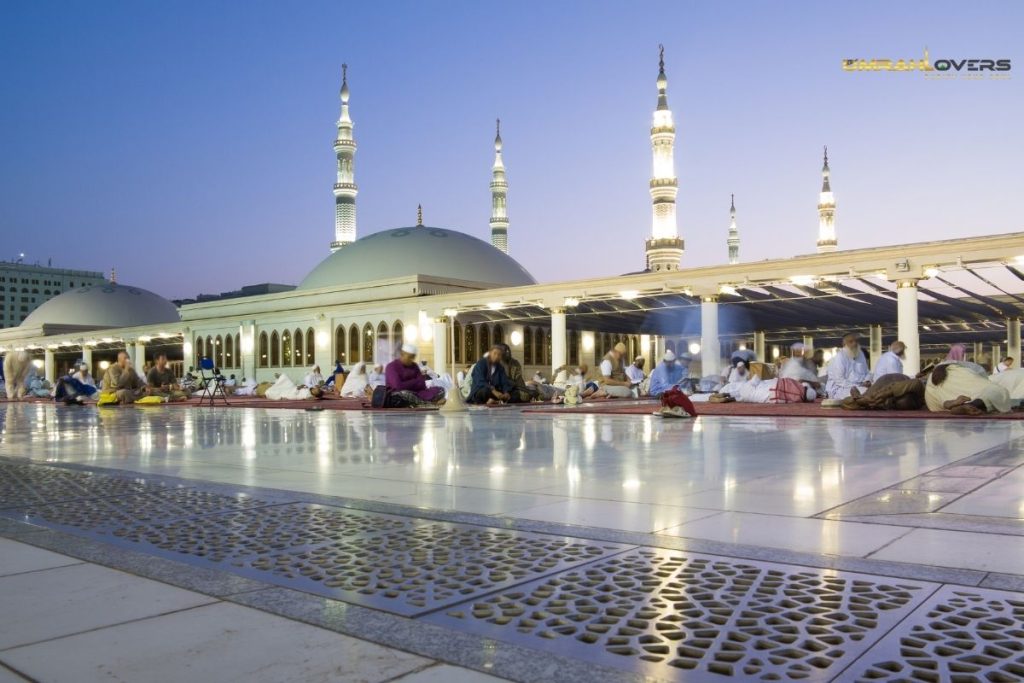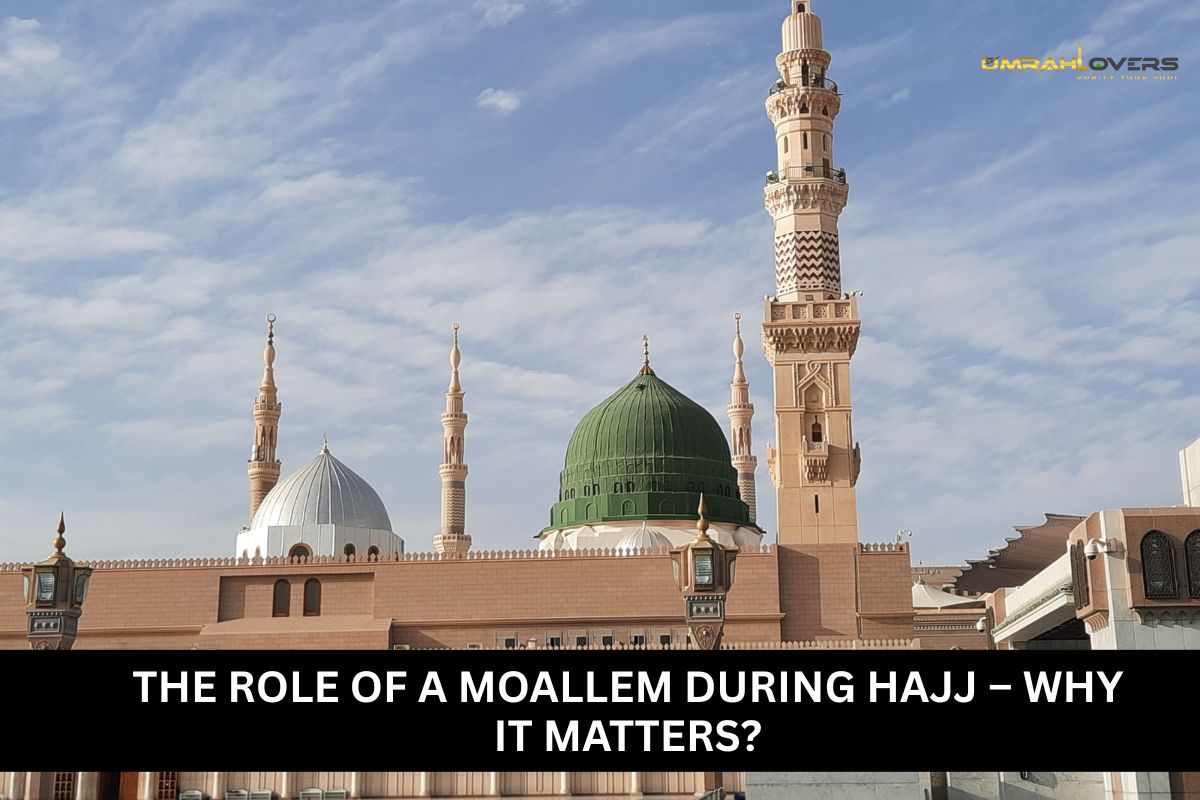To attend the pilgrimage this year, it is vital to learn about the basic Hajj checklist. Well, packing the right items will shorten your hassle a lot. Besides, it can get trickier if you just pack casually after arriving there. Basically, you’ll need to pack essential travel documents, prayer items, bags, clothes, accessories, hygienic things, medicines, and electronic devices. If you want to know these in detail, I’ll break it down in this guide to show what to pack, expect, and give you some safety tips too. Let’s begin!
What to Pack for a Hajj Checklist?
When you’re preparing for Hajj, think beyond just clothing. In this case, you’ll need to look into comfort, safety, spiritual focus, and so on. To help you understand what to pack in your bag, here’s what you need in certain aspects:
1. Important Travel Documents & Essentials
During Hajj, the Saudi authorities will want to check a few things before allowing you to attend the Hajj pilgrimage. In that case, keep these items with you when you pack your bag:
- Passport with visa.
- Proof of vaccination.
- Passport-sized photos (4 or more).
- Saudi riyals.
- Debit or credit card.
- Emergency contacts.
- Full itinerary & flight tickets.
2. Prayer & Spiritual Essentials
You’ll find many times when you’ll want to spend it on rituals or prayers. To ensure it goes smoothly, be certain to pack this stuff:
- Pocket-size Quran.
- Dua book with translation.
- Personal dua list.
- Digital dhikr counter.
- Hajj & umrah guide book.
- Tafsir book.
3. Baggage Essentials
If talking about the baggage tips on checklists, then you should carry the given type of baggage for Hajj usage:
- Hard-shell suitcase (medium-sized).
- Luggage tags.
- Light backpack.
4. Clothing & Accessory Essentials
In terms of clothing and accessories, you’ll need to pack smartly. These are some of the things you’ll search for after reaching there. So, it’s better to pack things focusing on the Hajj rituals. Here are some things to carry:
Two Ihram Clothes:
Trust me, it’s very likely the first one may get dirty or impure. Plus, try to use thicker cotton or towel-style ihram as thin cotton sticks to your body and gets uncomfortable.
Safety Pins or Clips:
These tiny pins or clips help a lot to secure your upper garment during the pilgrimage activities. Without one, it may fall off unexpectedly.
Waist or Neck Pouch:
Keep your money, SIM, debit card, and emergency contact info in this pouch or side bags. Try to wear it at all times.
Loose-Fitting Clothes (non-Ihram):
When not in Ihram, you’ll want to wear clothes that are easy to wash and don’t need ironing. I’ll also recommend thobes or shirts for men and abayas for women. For that, try to pack at least 5 to 7 sets.
Slippers, Sandals, or Sneakers:
Sandals should leave the ankle and top of the foot uncovered as an Ihram condition. So, it’s better to carry a few pairs of them to support. Sneakers can also help during long walks between sites.
Shoe Bag or String Bag:
Bring your shoes inside the mosque when you pack. It’s also easy to lose footwear in the racks, especially during peak times.
Jacket or Jumper:
If you’re traveling between November to February, nights can get cold. In that case, you’ll need a few sets of jackets or jumpers.
Socks, Underwear, Hijab, & Prayer Hat:
Always carry extra stuff like socks, undergarments, hijab, and a prayer hat for preparation. You can also make a short list of items that you want to take before packing these.
White Folding Umbrella:
White reflects sunlight better, so it’s good to carry an umbrella that supports it. Plus, sunlight can harm your skin, especially during Arafat day.
5. Toiletries & Hygiene Essentials:
Hotels can’t provide towels or basic hygiene stuff that you feel comfortable using. So, be sure to buy travel-sized items. Like:
- Toothbrush or miswak.
- Toothpaste.
- Soap.
- Shampoo.
- Towel.
- Handwash.
- Toilet rolls.
- Wet wipes.
- Hand sanitizer.
- Disposable razor or shaving machine.
- Nail cutter and small scissors.
- Suction hooks and sanitary pads.
6. Medication & Health Essentials:
Always pack the medical stuff for health safety. For instance, if you use an inhaler or insulin, be sure to carry a double dose just in case. Besides, Hajj crowds often lead to catching a cold. Plus, Vitamin C, painkillers, lip balm, and moisturizer (non-scented) can help. Along with that, you can use oral rehydration salts, diarrhea tablets, glucose powder, or pills. And one thing I would personally suggest carrying is muscle pain creams, Vaseline (for chafing), and sunscreen.
7. Electronic Essentials:
- Universal Adapter: Saudi sockets can give you a headache, and sometimes might not suit your devices. So, it’s better to carry a universal adapter with multiple ports.
- Unlocked Mobile Phone & Charger: Most Hajj packages include a Saudi SIM card. To use it with no hassle, it’s better to use an unlocked phone and charger.
- Power Bank: Devices or phones die quickly in the heat. Use a power bank, especially during rituals.
- Optional: Earphones, Quran recitations, flashlight, MP3 player, and digital tasbih.
Note: You’ll need to pack these things when getting basic or Ramadan Umrah packages from a reliable agency. In that case, you can make a checklist for Umrah too.
What to Expect for Hajj?
You can expect a lot of unexpected things when traveling to perform Hajj. In fact, it can affect physically, emotionally, and spiritually. Here’s what to expect:
- A huge crowd and potential delay in doing rituals.
- Take long walks, especially for Sa’i or Tawaf.
- Affects emotional and spiritual challenges if it reflects on faith and sins.
- Potential heat or cold illnesses or travel illnesses.
- Drinking water to avoid dehydration and tiredness.
- Friendly people around who help and respect.
- Shaving of the head or cutting hair for men and women.
- Spending the night in Muzdalifah to reflect and get close to Allah.
- Collecting pebbles for stoning the devil at the three pillars in Mina.
- Maintaining modesty on clothes and minds.
How to Stay Safe for Hajj?
Over the years, I’ve guided many pilgrims from Bangladesh, including those from Sylhet, Chittagong, and even those who traveled through Dubai tours before reaching Saudi Arabia. One thing I always suggest to everyone is safety. Here are some easy safety tips:
1. Avoid Peak Times
Many people think they need to finish all the rituals as soon as possible. Don’t do that as it can make you wait on peak times. Instead, try going early in the morning or later in the evening when the crowd is smaller. This also makes the experience safer for elders or women.
2. Take Breaks When You Need
There is no harm in sitting down and taking a rest. If you feel tired during Tawaf, Sa’i, and so on, step aside or relax for a few minutes. Sometimes, just 10 minutes in a quiet corner can help you feel fresh and avoid stress.
3. Stay Aware of Your Surroundings
Just like when you drive a car, you must be alert. During Hajj, you’ll see people of all ages, some using wheelchairs, others moving slowly. Look around before you move, especially during rituals. Well, a small step without looking can cause a trip or bump into someone else.
4. Keep Your Belongings Safe
Sadly, in crowded places, there may be some people looking to steal wallets or phones. For that, I always recommend using a waist pouch or neck pouch and keeping it under your clothes. Plus, when entering the Haram, carry your shoes in a plastic bag with you.
5. Never Push Others
A lot of times, the crowd gets tight and pushing activities start. Some cultures see pushing as normal, but it’s better to stay far from this to prevent accidents. Just stay calm, even if others push and try to move with patience.
6. Go with the Flow
If you find yourself in a big crowd, always move in the same direction as everyone else. Don’t try to go against the flow. In fact, walking the opposite way can cause accidents, falls, or confusion.
7. Don’t Walk Alone
For women, it’s safer to stay with someone from your group. Even if you’re just going to the washroom or buying snacks, ask someone to go with you. In that case, you can take your husband, father, or brother to feel confident.
8. Practice Patience
Yes, there will be long lines, heat, and delays. But don’t let it take away your peace. And, every time you stay calm in a difficult moment, try to think of it as part of your Hajj reward.
Final Thoughts on Hajj Checklist
There’s the Hajj checklist that can help you know what to pack, along with other helpful details. So, use this checklist and plan to customize. And, you can go through it step by step or ask me questions.Plus, a small tip from me is to get your travel pouch ready and take a notepad with a list to check on when you travel there. If you want help arranging group travel, Ramadan Umrah, or a short Dubai tour on your way back, I’d be happy to guide you or show you exciting packages from UmrahLovers. Hope you find this guide helpful to know what to pack, what to consider, and so on for your Hajj trip. May your wish come true!






